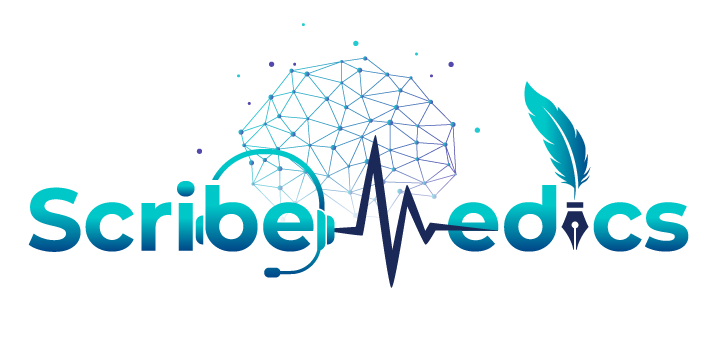With the advancement of technology, the health industry is also going through enormous changes. In this fast-paced healthcare sector, the emerging medical coding trends are navigating the overall system to a whole new level. As the methods of medical billing and coding progress, it has become impossible to continue without focusing on these trends.
Besides the growing adaptation of artificial intelligence in healthcare services, a shift towards value-based care and regulatory changes have posed challenges to coders. While these are few of many emerging medical coding trends, it has become evident that the coding practices must evolve to cope with the changing pattern of health insurance guidelines and care delivery. Before learning about the most popular trends, let us go through the challenges that worked as their foundation.
Current Challenges In Medical Billing & Coding
The medical coding and billing segment faces multiple roadblocks that keep it from attaining its goals.
1. Frequent Regulatory Changes
With more incoming regulations, it is becoming more challenging for coders to keep up with massive updates linked to medical billing and coding. With new additions of codes for COVID-19, mental health, etc., the coders must process these quickly with the ongoing workflow, which is problematic.
2. Increased Coding Complexity
More complex and specific codes are coming to light with medical sector advancements. These highly detailed codes require a profound understanding and more time to process. Human coders must have expertise in incorporating these codes and streamlining medical billing coding practices. For the best medical billing service, the providers rely on ScribeMedics.
3. Burnout & Staff Shortage
The growing inclination toward medical coding services results in a soaring demand for skilled professionals to manage it. Despite many working in this field, there is a dire shortage of certified human coders. This can have a negative impact on the existing workforce, thereby causing burnout.
4. Inaccurate Documentation
Due to the extreme work pressure, errors are inevitable. A burned-out virtual scribe may cause medical records to be inaccurate. Incomplete or inaccurate documentation can challenge the human coders, causing medical billing and coding errors.
5. Higher Claim Denials
Billing inaccuracies caused by wrong codes and documentation errors are the primary reason behind the rising number of insurance claim denials. The prolonged denial management and follow-up process can be time-consuming, taking up a lot of time-related constraints for the professionals.
6. Data Privacy Risks
With the increased cyberattacks to exploit sensitive patient information, privacy risks are at a peak. While medical coding & billing practices suffer the consequences of non-compliance and poor safety protocols, the coders find it difficult to manage everything simultaneously.

The Role Of Medical Coding Specialists Today
Let us look at the role of medical coders at present.
- Assigning accurate codes to diagnosis, healthcare services, and procedures, supporting revenue cycles with precision in coding, and detangling complex cases requiring more profound clinical knowledge with specialized coding.
- Adopting HIPAA-compliance practices to safeguard patient records, complying with the coding-related guidelines, and fostering audit preparedness for penalty risk mitigation.
- Collaborating with other healthcare professionals to clear their doubts associated with ambiguous data in medical records, with the billing department to handle claim rejections, and with the IT team for EHR system optimization.
- Generating coded data for tracking health outcomes, costs, and trends and facilitating value-based care initiatives through the alignment of medical codes with quality metrics.
- Utilizing AI-powered tools and software to flag documentation errors and auto-suggest medical codes. Also, adapt remote care coding guidelines to support telehealth services or virtual health monitoring.
Key Medical Coding Trends In 2025
Several medical coding trends are expected to transform the health industry.
1. AI Integration & Automation
Artificial Intelligence (AI) enables automation to complete repetitive tasks. Hence, coders can concentrate on the complicated cases that require human insight. With Natural Language Processing (NLP) in action, clinical notes are evaluated and assigned with accurate codes, making the medical coding and billing processes seamless.
Predictive analytics allows the coders to locate coding errors. It also helps to detect insurance claim denial trends to improve the revenue cycle. Artificial Intelligence is one of the key medical coding trends that gives real-time coding suggestions through integration with EHRs. AI also audits the entire system to maintain compliance with relevant guidelines and identify gaps to address. Hence, AI is not just a tool but a strategic partner that streamlines the coding process.
2. Telemedicine Expansion
Telehealth has become a crucial factor that impacts the future trends of medical coding and billing. The new CPT codes for audio-only and video consultations will bring remarkable growth in this segment. Telemedicine remains one of the most difficult areas to bill, and the causes include diverse payers and jurisdictions.
It is essential to opt for quality remote medical scribe services to ensure error-free documentation, as this will serve as the primary way to reduce telemedicine billing errors. ScribeMedics is one of the most prominent medical scribe companies to consider. Accurate documentation is one of the key ways to overcome telemedicine coding and billing challenges and foster quality care delivery. Also, new coding strategies will be necessary for hybrid models where physical presence meets the virtual world.
3. Blockchain Technologies
Rapid digitalization has made improving safety measures to protect sensitive patient data and enable secure transactions more crucial than ever. Blockchain technologies ensure data integrity and reduce fraud or third-party access. With the boosted security and transparency of blockchain, the trust and credibility of the healthcare channels increase.
Automated billing helps to relieve the burden of administrative tasks. This further escalates the payments and ensures on-time care delivery. The enhanced security helps with interoperability, too. With seamless data sharing among various healthcare departments, care coordination improves, standardizing medical billing and coding practices.
4. Computer-Assisted Coding (CAC)
This is one of the major medical coding trends that is set to transform the medical billing coding sector. Computer-assisted coding uses NLP and ML for clinical data assessment and medical code suggestions accordingly. This ensures both accuracy and compliance to the medical records as well as the medical coding workflows. CAC enhances coders’ productivity through automation of the routine tasks. This allows them to focus solely on the complicated cases.
CAC systems automatically update the existing codes, helping human coders to maintain adherence to the relevant regulations. They flag the inconsistencies, streamlining the documentation, resulting in lower denials and improved revenue cycles. Also, CAC prioritizes quality metrics and boosts scalability. All these factors contribute to enhancing medical billing services.
5. Insurance Policy Tracking
Health insurance policies are pivotal in navigating the medical coding trends. Most providers work with multiple health insurance companies and struggle to follow their distinct billing guidelines. As a result, it becomes difficult to maintain a correct workflow without any errors. With the seamless EHRs integration into medical coding, tracking any changes linked to the healthcare policies will be easier.
6. IPA For Denial Management
Soaring insurance claim denials can affect the overall process of healthcare. IPA or Intelligent Process Automation enables efficient management of denied claims. It utilizes artificial intelligence to detect errors or missing data and prevent rejections. Also, this system evaluates the denials and divides them into different categories based on the reasons behind them, preventing future rejections. IPA systems automate the appeal process by generating and submitting updated claims, making it one of the key medical coding trends.
7. Emphasizing Cybersecurity
Cyberattacks have become more common in the present time. With the rise of AI-driven cyber threats, adhering to HIPAA standards to maintain the overall security of patient data is integral. New innovative ways to block these attacks will turn into data protection mandates for healthcare organizations. Security awareness training programs for the healthcare staff must follow this. With more emphasis on cybersecurity, the future of medical coding and billing.
8. Shift Toward Value-Based Care
Value-based care is set to bring revolution to the health industry. Medical coding experts are to incorporate quality-based reimbursement codes reflecting the efficiency of care and its outcomes. Risk adjustment and Hierarchical Condition Categories (HCC) benefit value-based care models. Accurate codes that suit bundled payment models will be used for seamless reimbursements. Preventive care codes and SDOH documentation are also crucial to embracing one of the most prominent medical coding trends.
9. Patient-centric Billing
This is one of the medical coding industry trends that is focused on patient experience enhancement throughout the billing process. The patient-centric billing allows transparency in pricing and flexibility with payment modes. Therefore, it is more convenient for the patients as they become well aware of the financial obligations. A simplified billing statement is another crucial factor of this billing, which aims for clarity over the amount. Patient-centric billing improves service user experience through the prioritization of patient inquiries. It helps to foster seamless collaboration among the providers and service users.
10. The Rise Of ICD-11
The modern healthcare is all set to be enriched by the ICD-11 (International Classification Of Diseases 11th Revision). In this era of digitalization, this transition from ICD-10 was much needed. The digital-first approach of ICD-11 features NLP and APIs, blockchain, interoperability, and AI-powered tools. With a new aspect for traditional medicine like Ayurveda, ICD-11 expands the scope of holistic care.
This is one of the major medical coding trends to ensure error-free documentation for complex cases like cancer stages through 200 new allergen codes. ICD-11 also includes codes for mental health issues and social determinants of health (SDOH). Hence, it is expected to ensure clinical well-being in a societal context. It is available in 14 languages to boost accessibility. ICD-11 aligns with the SDG health targets by WHO, enhancing the overall accuracy of healthcare services.
11. Demand For Certified Coders
Due to the frequent updates to the existing coding systems, expansion of value-based care, AI-assisted procedures, new telemedicine codes, regulatory complexity, etc., hiring medical coders with sound knowledge has become essential. Especially, fields like oncology, cardiology, mental health, telehealth, remote monitoring, SDOH, and risk adjustment require deep clinical knowledge. Hence, the outsource medical coding companies and the care providers are looking for certified coders who possess specialized skills to streamline medical billing and coding.
12. Revenue Cycle Optimization By Data Analytics
Healthcare organizations can prevent claim denials by evaluating the previous rejection patterns through predictive analytics. With real-time error detection, data analytics can help to reduce denials. Advanced analytics help with real-time performance monitoring to track claim statuses, enhance cash flow forecasting, and enable workflow optimization.
This is one of the key medical coding trends to ensure predictive patient payment solutions, simplified mobile billing, transparent cost estimates, automated audits, SDOH tracking, and cloud-based analytics. All these collectively impact the growth of medical coding & billing.
13. Evolving Regulatory Landscape
As the health industry is revolutionizing with passing time, the regulatory landscape is also going through a transition. With the introduction of new medical coding standards, the leap from ICD-10 to ICD-11, shift towards value-based payment requirements, and stricter reporting mandates, are making a massive impact on the quality of medical billing and coding.
Can AI Deal With Complex Medical Records Like Humans Do?
Artificial Intelligence can help to speed up large volumes of data processing and analysis to provide insights. These can detect the healthcare patterns of illnesses and allow future risk assessment to prevent complex scenarios. With AI-powered systems, repetitive tasks like data entry can be automated. This helps with error-free documentation and accurate coding to support the medical billing services.
Serious medical conditions require prolonged care or complex treatment procedures, which involve the collective efforts of multiple departments or specialists. AI enhances interoperability to ensure seamless data exchange, effortless EHR updation, and reduce medical errors. However, AI still requires human oversight for complex decision-making and clarifying data ambiguity. Hence, it is evident that AI can efficiently deal with complex records if human oversight is present.
Benefits Of Technology In Medical Coding Trends
Technological advancements have changed the way the healthcare sector operates for good. There are key benefits of integrating technology in the medical coding trends.
- With AI-driven coding tools, NLP, and a real-time error detection system, human errors can be reduced to a great extent. This will result in higher coding accuracy, documentation gap correction before claim submission, and less overcoding or undercoding. Fewer denials, higher compliance, and enhanced revenue integrity will enrich the medical billing coding system.
- With innovations like CAC, the coding time can be reduced, and the providers can focus on patient care. As AI conducts batch processing of data, it escalates reimbursements. Also, the upgrading of EHRs enables seamless data movement between various systems. All these result in faster processing of medical claims and increased productivity of healthcare professionals.
- Data analytics help with fraud detection, regulatory compliance, and audit readiness. These help to reduce penalties and audit risks while allowing the service to align with the value-based models.
- Reduced claim denials, reimbursement optimization, and lower manual coding costs due to advanced technology result in operational cost savings. Also, the prevention of underpayment helps to preserve revenue for the companies for medical billing and coding.
- Data-driven insights obtained through predictive analytics, revenue forecasting, and KPI dashboards boost proactive decision-making efficiency. Therefore, financial planning and strategic resource allocation become easier.
- Cloud-based systems make healthcare operations scalable when demand grows, such as during a pandemic. Also, machine learning helps with the effortless adaptation of new coding guidelines, resulting in enhanced patient experience.
What Can Coders Do To Take Advantage Of The Medical Coding Trends?
It is essential for the coders to upskill themselves by learning the basics of AI & ML, mastering the analytics platforms, and pursuing certifications like CDEO to stay ahead of the curve. They can embrace one of the key medical coding trends, AI, through auditing AI-generated codes and high-risk claims. They must give feedback to train the NLP systems for higher accuracy and less data ambiguity.
The coders can proactively manage the claim denials by evaluating denial patterns, submitting claims after audits, and collaborating with physicians. Documentation errors are key roadblocks to efficient medical coding pay. Coding experts can clear data ambiguity through effective communication with the clinicians, advocate for standardized EHR templates for higher compliance, and detect inconsistencies in clinical notes with NLP tools.
They must be well aware of the new codes linked to SDOH, value-based care, and telehealth to align their services with the changing healthcare scenario. A deeper understanding of blockchain is advisable with the rising cyberattacks. Lastly, it is important to stay updated on the latest regulatory changes to avoid penalties or lawsuits.
The Role Of Medical Coding Companies Like ScribeMedics
As a prominent medical billing and coding company, ScribeMedics focuses on providing its clients with superior services. Whether you are a clinician or a healthcare organization looking to outsource coders, we offer the best here!
At ScribeMedics, only the best medical coding in USA awaits as our expert coders are proficient in what they do. They are updated about the latest medical coding trends like AI and regulations as they upgrade themselves accordingly to ensure the clients get the best service.
From expert coders to proficient virtual medical scribe services, the organization ensures every needful step is undertaken to provide you with the best medical billing service in the USA. ScribeMedics can streamline medical billing and coding to positively impact the overall patient experience.
Frequently Asked Questions
1. What is the future of medical coding?
The integration of Artificial Intelligence (AI) is the medical coding practice that will revolutionize how the health industry has navigated all these years. Besides automating repetitive tasks, AI will ensure higher accuracy in healthcare practices. However, human coders must pass on contextual judgment. They will help to align the codes with the emerging medical coding trends.
AI speeds up the insurance claim processing while human oversight ensures regulatory guidelines are followed. Specialized coders with a deeper understanding of AI and value-based care coding are preferred. Medical billing and coding have been streamlined with the help of certified coders who specialize in handling complex scenarios. Blockchain is a key trend that makes medical coding and billing a secured practice.
2. What are the advances in medical coding?
As medical billing and coding evolve, clinical precision remains at the centre of everything. While the digital readiness driven by EHR integration ensures seamless operations, the global standardization aligns the practices with regional, national, and international medical coding trends. As more new medical codes come to light, the precision also improves, ensuring error-free bills, fewer claim denials, and faster reimbursement cycles.
The NLP tools help to suggest codes to unstructured clinical data, escalating processes and reducing errors. Automated audits, fraud identification, and predictive analytics streamline reimbursement and revenue cycles. With the new CPT codes, the documentation of telemedicine services has become more proficient. Remote monitoring improvements and speciality-driven coding innovations have provided a direction to the current trends of medical coding.
3. What is the hardest part of medical billing and coding?
Change is never seamless. With every transition, certain challenges will appear, which must be managed to see the light at the end of the tunnel. As for the medical coding and billing segment, the hardest part is the complex coding systems. Staying wary of the latest versions of ICD and CPT is essential to navigating the overall process in the correct direction. Hence, continuous learning is highly necessary.
The ICD and CPT codes are updated frequently. If the coders are not aware of the new codes, it becomes difficult to maintain compliance and accuracy in the medical records. As these systems are complex, there are higher chances of errors. The coders can overcome this challenge with relevant training sessions and foster higher patient satisfaction.
4. What is the greatest benefit of medical coding?
Medical coding streamlines the billing process by enhancing overall accuracy. Medical coders are responsible for assigning codes to the diagnosis, procedures, and services for error-free billing. Documentation errors are one of the key reasons behind inefficient patient outcomes. Coders help to turn clinical notes into medical codes. These help to bring accuracy to the medical bills.
Correct bills are integral for faster claim processing and fewer denials, leading to efficient reimbursement cycles. This helps to reduce the expenses associated with denial management and lawsuits. Therefore, medical coding helps to reduce the overall healthcare costs.
The greatest benefit of medical coding remains the error-free patient records, as these are the base for future research and advancements in the medical field. Also, proper records streamline medical billing service. ScribeMedics can provide expert medical coding and billing services to healthcare providers for efficient revenue cycle management.
5. Who sets coding guidelines?
Different government and private bodies set up medical coding guidelines to streamline billing services. Government agencies, such as CMS (Centers for Medicare and Medicaid Services), are responsible for setting codes for Medicare or Medicaid claims. They also take care of telehealth coding aspects. International organizations, such as WHO (World Health Organization), focus on ICD code development, while another Government body, the National Center for Health Statistics, oversees its operations.
The American Medical Association (AMA) is one of the professional associations to own and manage CPT codes. This helps to improve the billing services. The private insurance companies establish the payer-specific coding guidelines. Here, mostly high-cost services require prior authorization for the provider. All these are crucial for better compliance, accuracy, and seamless reimbursement cycles.
6. Who is the father of medical coding?
There are many prominent figures whose names have been associated with the rapid growth of coding in healthcare. When talking about the father of medical coding, the name of Jacques Bertillon comes up before anyone else. The French physician and statistician became famous for developing the Bertillon Classification of Causes of Death in 1893. This is the first-ever standardized system to classify the causes of death.
The Bertillon classification became the foundation of other innovations in this field. For instance, the 1900s witnessed the publishing of the ICD (International Classification Of Diseases), which remains a key aspect of coding even today. His remarkable legacy in standardization positively impacted the medical billing and coding companies across the globe.
7. What are CPT 4 codes?
Current Procedural Terminology – Fourth Edition (CPT 4) is a standardized set of medical codes that are primarily used for billing purposes. This is developed by the AMA (American Medical Association). These codes are highly beneficial for maintaining seamless communication among healthcare providers, regulatory bodies, and insurance companies. This results in billing accuracy, faster reimbursement cycles, and proper data analysis.
CPT 4 is a numeric code consisting of a total of five digits. These codes have three categories: category I, II, and III. These codes are applied for billing and reimbursements, research and public health, and compliance to regulations. As AMA owns the copyright of CPT 4, it controls the yearly upgrades, aligning with the medical advancements.
8. What is ICD-10-CM coding?
The full form of ICD-10-CM is the International Classification Of Diseases – Tenth Revision – Clinical Modification. This medical coding system aims to classify diagnoses, symptoms, and health conditions for accurate code assignment. These codes are widely used for clinical documentation, public health tracking, billing and reimbursement, and research purposes.
ICD-10-CM coding is based on the ICD-10 code sets by WHO. These alphanumeric codes comprise of at least three and a maximum of seven characters. The codes aim to provide a comprehensive idea of concerned injuries, diseases, and health issues. These codes help streamline medical billing coding and maintain a seamless reimbursement cycle.
9. What is HCPCS in medical coding?
The full form of HCPCS is Healthcare Common Procedure Coding System. This standardized coding system is used in the USA to assign codes to healthcare supplies, procedures, services, and products for billing efficiency, thereby speeding up the reimbursements. There are three structures of this system, i.e., level I, II, and III, that consist of CPT, HCPCS national, and local codes, respectively. However, level III has been obsolete since 2003.
HCPCS is responsible for seamless billing and reimbursement by ensuring standardized reporting to Government and private insurance companies. Besides tracking the healthcare resource usage, this medical coding system complies with the regulations to avoid claim denials. ScribeMedics can support the healthcare providers with regulatory compliant coding services.
10. Who is provider in medical coding?
The provider refers to the healthcare professionals who are responsible for delivering any chargeable service or diagnosis. These are aimed at enhancing patient outcomes and making an impact on medical bills. Here, the coding experts assign suitable codes to the diagnosis and procedures to streamline medical billing service, which is the core of insurance claims.
The coders collaborate with the providers to ensure higher accuracy, transparency, and compliance. They turn the clinical notes into standardized codes to ensure enhanced care outcomes. ScribeMedics can help providers streamline billing and reduce denials through their expert medical coding services.
11. What is the main term in medical coding?
Medical codes are integral to ensure an accurate billing process and avoid the workload associated with denial management. As for the main term in medical coding, it implies the foundation of this system that holds everything together. Also, it can refer to the primary word involved in the code. For instance, if the code is meant for knee replacement surgery, the main term or primary word will be ‘knee replacement’, as the medical procedure revolves around it.
The CPT and ICD codes are the key terms that determine the flow of coding. These are the foundational systems on which the coding process is based. Hence, these can be referred to as the main terms in medical coding.
Dinesh Kumar is a healthcare workflow architect and clinical documentation expert with over a decade of real-world experience supporting physicians across multiple specialties in the United States. As the Co-Founder of ScribeMedics, he has helped transform how medical practices handle documentation, coding, and administrative workflows, reducing burnout, improving patient flow, and enabling clinicians to reclaim their day.
Since 2013, Dinesh has worked closely with providers on the front lines of patient care. Over the years, he witnessed a recurring problem: clinicians were drowning in administrative work, spending hours after clinic hours updating charts, reconciling notes, and managing documentation backlogs. Instead of accepting this as “part of the system,” he decided to fix it.
Under his leadership, ScribeMedics has grown into a global hybrid scribing and documentation support company known for accuracy, compliance, and reliable workflows. From medical scribes and CPC-certified coders to virtual back-office support, his teams help multispecialty practices increase revenue integrity, reduce charting time, and improve patient-physician satisfaction.
Dinesh works with healthcare providers, practice owners, and attorneys who want streamlined documentation, better reimbursement outcomes, and more efficient operations. His approach blends empathy, process engineering, and deep domain expertise to create systems that work, day after day.
When he isn’t optimizing clinical workflows, Dinesh mentors documentation teams, trains young professionals, and speaks about burnout prevention, workflow design, and the future of hybrid AI-driven scribing.









 Medical Transcription
Medical Transcription Medical Billing
Medical Billing Medical Coding
Medical Coding